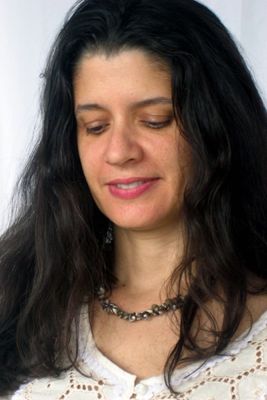Below is part two of my recent interview with Janine Antoni in advance of her keynote address and workshop at the National Art Education Association’s annual conference here in New York from March 1-4. For part one of the interview, please click here.
Enjoy! See you later this week…
This Friday you will have about three thousand art educators from all over the country listening to your keynote address at the National Art Education Association’s annual conference. What do you most look forward to about participating in this year’s conference and what made you originally want to participate?
Janine Antoni: I want people to love art and appreciate the richness it can provide for one’s life. I see teachers as our first initiators. This introduction can set the stage for what a relationship with art can be. One does not need to be an artist to have one’s life enriched by art. Art provides an alternative way of learning that could be valuable in all aspects of our lives. Although I am far from a trained teacher of art, I feel that looking at an artist’s creative process can give clues about how to approach teaching art. It is a great pleasure and honor to be given the opportunity to share my practice with people that play this important role.
What other things will you be doing at the conference? You are also conducting a workshop. What will that be like?
JA: I’m particularly excited for the workshop. I have the opportunity to speak at art institutions and universities around the world and when possible I conduct a workshop rather then do studio visits. I am drawn to the workshop model as a way of generating and sharing ideas while creating an intimate atmosphere where people can engage in an inner search. For me, art isn’t necessarily about making things but about a way of thinking and accumulating tools for learning. The workshop will not be about how to teach art but to engage in the unknown.
Tell me more about how teachers will be “engaging with the unknown”. What kinds of things might they doing, or sharing with you, during that time? As someone who works with high school students every day, I think I have an idea about engaging with the unknown, but I’m not sure it’s the same kind you’re talking about…
JA: I want to approach the same subject matter from different perspectives: scientific, psychological, social, and emotional. The spaces we will create between these perspectives will allow for observation, contemplation, and interiority. The conclusions that we come to through this experience is unknown.
Many art educators find it difficult keeping an art practice and teaching practice going simultaneously. I often suggest to teachers there are ways to make connections between the two. What do you think? Does your art practice influence your teaching practice and vice versa?
JA: I’m drawn to teaching what I don’t already know. It allows me to treat the classroom as a space for exploration where my students and I learn together. I try to look for questions that are relevant to us all. When we all contemplate the same questions, we accumulate approaches that broaden our perspectives. We all bring this back to our work in uniquely particular ways.
This is not unlike my approach to making art. By locating problems I identify questions that often draw me to unlikely materials and unknown approaches to making.
During our last conversation in 2009 you said, “I like to talk to my students about the importance of fantasy, because I think we all have a secret conversation with an imaginary viewer in our mind when making.” How might we encourage our students to engage in this kind of dialogue more often?
JA: I see teaching as working towards sharpening the skill of moving from the subjective to the objective and back again. For many of us our ideal viewers are ourselves. We engage in fantasy when we separate our making self from our viewing self. In teaching, I try to parallel this process by creating situations where we play out these two selves for each other. It is this kind of fantasy that produces limber thinkers and makers.





Pingback: Teaching with Contemporary Art Turns Four | Art21 Magazine